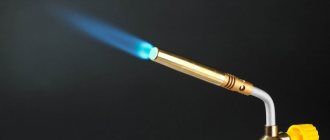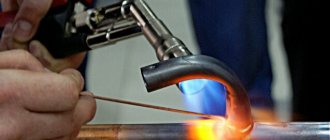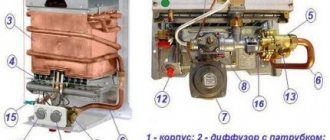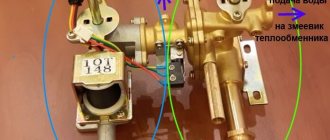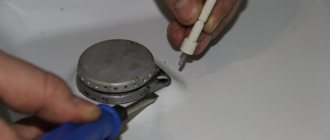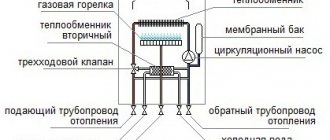Quite a lot of types of household appliances that make human life much easier have already been invented, but all devices have one thing in common - the readiness to unexpectedly fail. Moreover, both large household appliances and small but extremely necessary devices suddenly break down. For example, portable gas burners equipped with piezo ignition often present unpleasant surprises. It is difficult to do without them for small household work, and it is absolutely impossible to provide “human” conditions far from home - for example, on a hike or in the country. Of course, portable, relatively simple devices are not as expensive as large units. But it’s still not advisable to throw out a recently purchased device at the first malfunction. For these reasons, owners of almost irreplaceable equipment are trying to find out how to repair a gas burner with their own hands.
How to choose?
What you need to pay attention to when choosing a burner device for a boiler:
- productive power - noise level during operation (applies to supercharged models) - type of heating equipment for which the burner is purchased - type of fuel - pros and cons of this device - provide for possible malfunctions in the operation of the local gas supply line.
Taking these factors into account, you can choose the most suitable burner device for your boiler so that it operates as efficiently as possible without the burden of frequent preventative maintenance.
Combustion chamber of heating equipment
Gas boilers differ primarily in the design of the combustion chamber. It comes in two types:
- open;
- closed.
The open chamber is a fairly simple combustion device. It looks like this: above the burner there is a heat exchanger in the form of a coil of thin copper tubes. Thanks to the open design, the air required for the combustion reaction is supplied to the point of ignition of the gas from the environment.
As a rule, there is enough air from the room (provided good ventilation is organized). But there are wall-mounted models with air intake from outside, for which a special hole is mounted in the wall. Open combustion chambers require a chimney.
Most often it is installed for models of floor-standing gas boilers, and was also used to complete an old-style boiler (in this case, ignition was carried out by a pilot burner).
Combustion chamber design diagrams
The closed combustion chamber is distinguished by the design of the heating block. The heat exchanger is located above the burner. The unit body is closed, combustion air is pumped by a fan installed in the chamber. Coolant is passed through the double walls of the chamber, heating it, increasing the efficiency of the boiler. The gas is burned almost completely, the combustion products are removed by a coaxial pipe under air pressure.
Old gas water heater. How to use? — Homo habilis. Magazine for skilled people
thebarrowboy, flickr.com CC BY
Centralized hot water supply is certainly a convenient thing. But often, when moving into an apartment rented or purchased on the secondary housing market, we are faced with an outlandish unit - an old gas water heater. How can it be used safely?
A gas water heater, or, as it is officially called, a flow-through gas water heater, appeared in our country with the beginning of mass housing construction in the 50s of the twentieth century. It was the installation of geysers in apartments that made it possible to quickly solve the problem with hot water supply without the construction of expensive heating plants and pipeline networks.
How to determine the type of geyser?
First of all, let's define the terminology - we will call the old one a geyser, the design of which includes a constantly burning ignition wick. The wick is ignited with a match or, in more modern models, with a spark from a manual piezoelectric igniter.
The overwhelming majority of geysers installed in “Stalinka” and “Khrushchev” buildings belong to two varieties - KGI-56 and similar in design L-1, L-2, L-3, GVA-1, GVA-3, early VPG models. It is easy to distinguish them from each other by their control knobs.
The KGI-56 water heater (gas water heater, designed in 1956) was widely used in the construction of multi-story buildings in the 50-60s of the last century. It has a rectangular, slightly rounded body with an oval hole for ignition and two levers in the lower part of the body - a lever for turning on the pilot burner and a lever for controlling the power of the main burner. In later versions, a solenoid gas valve button is also installed on the front panel.
Dispensers of the L (Leningrad), GVA (automatic gas water heater), VPG (instantaneous gas water heater) series are structurally similar and have one rotary knob in the center and (optional) a solenoid gas valve button.
HSV dispensers became perhaps the most common in Russia and were produced in huge quantities under various names (Neva 3208, Neva 3210, Neva 3212, Neva 3216, Darina 3010 and others).
The era of mass installation of geysers in our country was short-lived - after 20-25 years, almost all new buildings were connected to hot water supply networks. Columns remained a distinctive feature of “Stalin” and “Khrushchev” buildings. But their owners don’t complain – this is Russia. And while the “lucky ones” with a centralized hot water supply heat water in a basin on the stove every summer for two or three weeks, they calmly use hot water. And a gas water heater costs significantly less than hot water from pipes.
And that’s probably why residents of new buildings tell each other horror stories about an unknown and terrible device - a gas water heater. And it breaks down every other day, and it takes a long time to light it, and it’s dangerous to use it. Is it really?
Is it safe to use an old gas water heater?
A person accustomed to centralized hot water supply usually judges the safety of a gas water heater based on rumors and speculation of friends and acquaintances. Often these people have never even seen a gas water heater, especially an older one. Hence, terrible legends about almost daily explosions of gas water pumps are multiplying. It gets to the point that some families, living in a rented apartment and having a fully functional appliance, heat hot water in a basin on the stove.
All these horror stories are greatly exaggerated. Any geyser, even if it was made half a century ago, has safety devices in its design. Such devices include a water regulator, a flame sensor and a draft sensor.
The water regulator is based on the properties of the Venturi nozzle and allows you to turn on the column only when a sufficient amount of water flows through the column. All geysers, including the most modern ones, operate on this principle.
The operation of the flame presence sensor is based on the thermal effect of the pilot burner flame on a bimetallic plate or thermocouple. In a design with a bimetallic plate, when the igniter is burning properly, the bimetallic plate, bending, presses on the valve stem and opens gas access to the main burner. When the flame goes out, the plate cools down, straightens, and the valve shuts off the gas supply to the main burner. Gas continues to flow to the pilot burner, but this weak flow does not pose a danger.
The design with a thermocouple is more advanced. The thermocouple, heated by the pilot burner flame, generates an electric current that holds the solenoid gas valve open. When the flame goes out, the thermocouple cools down, the current stops being generated, and the valve closes under the action of a spring. In this case, the gas supply is cut off to both the main and ignition burners.
The traction sensor also comes in two versions. In one of them, air for the pilot burner flame is taken through a tube from under the upper casing of the column. In the absence of draft, carbon dioxide and carbon monoxide accumulate there, which, flowing through the tube instead of fresh air, extinguish the igniter. After this, the flame presence sensor is triggered and shuts off the gas supply.
Solenoid valve designs often use a bimetallic fuse inserted into the gap between the solenoid valve and the flame sensor thermocouple. A bimetallic fuse is also installed under the upper casing and, in the absence of traction, quickly overheats and trips. The contact between the thermocouple and the solenoid valve is broken and the valve shuts off the gas supply.
The joint operation of all these safety devices makes the operation of the gas water heater simple and safe.
How to light an old gas water heater?
If you see a gas water heater for the first time in your life, then the best option would be to invite someone who will show you how to handle it. The world is not without good people, not just one, but another neighbor will probably not refuse to help you. But sometimes there is no one to turn to, and you have to figure it out on your own. By the way, situations are not uncommon when people who have been using a gas water heater for years do it incorrectly, and only smart safety automation saves them from harm. Therefore, recommendations in any case will not be superfluous.
Before starting the old gas water heater for the first time, especially after a long break, it is necessary to carry out several auxiliary operations.
Types of burners
According to their design and functional differences, burner devices are divided into:
By purpose:
- for high power industrial equipment
- for household equipment.
By fuel type used:
- devices for natural gas;
- devices for liquefied gas;
- universal devices.
By flame adjustment:
- single-stage – capable of operating on/off;
- two-stage (as a variation - models with smooth modulation) - operate at full power, when the desired temperature is reached, the flame is reduced by half;
- modulating - boilers with a modulating burner are characterized by smooth adjustment of the flame power.
According to the operating principle:
- injection/atmospheric. They operate by supplying air from the room. They are installed respectively in open combustion chambers. Also used for old-style boiler models.
- fan/supercharged. They work in isolated combustion chambers. Combustion air is supplied by a fan. According to their design features, they are divided into: - vortex (round-shaped nozzle holes) - direct-flow (shape of a narrow slot with a round/rectangular cross-section).
- diffuse-kenetic. Air enters two simultaneously: one is mixed with gas fuel, the second is added directly to the chamber during combustion.
Specifications
To the question: “How are the chemical and physical properties related to the technical features of this mixture?”, it is worth considering all possible answers.
- Firstly, due to its high “holding” pressure in the liquid state, this gas is too inert. That is, it can easily be converted from a liquid to a gaseous state. This is a very useful feature in industries where this is absolutely necessary.
- Secondly, the low boiling and freezing points make the propane-butane mixture resistant to “collisions” with substances of nitrogen origin. Consequently, it guarantees its safety from freezing and boiling.
- And, of course, it is worth noting the high combustion temperature of propane, without which its benefits would not be so significant for achieving certain household or industrial goals.
Gas burner device for a boiler
Atmospheric and fan burner devices differ in their structure. This is due to the different ways in which oxygen is supplied to the chamber during fuel combustion.
Atmospheric burner device.
Air enters the combustion chamber directly from the room. Nozzles are located inside the burner channel. Gas is supplied to the nozzles, mixing with air, which also has access here. At a short distance from the nozzles there are outlet slots through which the finished fuel mixture is supplied. An area of reduced pressure is created between the nozzles and outlets, which promotes a constant supply of air for mixing.
A pilot burner is constantly running in the combustion chamber to ignite the main device.
Fan burner device.
The device block consists of:
- engine;
- fan;
- automatic control unit;
- gearbox;
- air pressure switch;
- fuel mixer.
Air is forced from outside by a fan and supplied to the combustion chamber to form a fuel substance. The air to gas ratio can be adjusted using a damper and a fan.
Chemical and physical properties
Propane-butane has unique chemical and physical properties, which literally makes it so popular among consumers all over the world.
Firstly, this representative of liquefied carbon gases remains in liquid form exclusively at high pressure, which is equal to 16 atmospheres. Therefore, during transportation, the substance is transported only in gas cylinders with appropriate pressure.
Read also: Metal staples for staplers
The combustion temperature of propane is not equal to any specific number and ranges between 800-1970 degrees Celsius. Such high indicators fully justify the benefits that it brings to human life, because the combustion of this mixture has high efficiency when performing any tasks related to the use of this gas.
The boiling point of propane is -42 degrees Celsius, which indicates a guarantee of safe operation under normal conditions.
But since we are considering a mixture of propane and butane, this figure can rise to -25 degrees and even higher, depending on the percentage of components in the substance. It is worth considering that propane freezes at a temperature of -188 degrees.
When transporting the substance, do not forget about the temperature of the propane in the cylinder, which should not exceed 15 degrees Celsius.
This approach is considered the safest, since when transporting gas cylinders at higher temperatures, the risk of fire increases significantly.
By the way, as for the ignition temperature of propane-butane, here they differ - for the first it is 504 degrees Celsius, and for the second - 430. But, despite such a large number of differences between its components, this representative of liquefied carbon gases is quite competitive with gasoline combustible mixtures.
Burner flame
One of the indicators of proper burner operation is the color of the flame. Gas equipment is characterized by an even bluish flame without admixtures of other colors. The presence of yellow or red splashes indicates that the burner is not working well, which reduces the efficiency of the heating equipment.
First of all, this applies to injection burner devices, but sometimes it is also typical for fan burners. The flame may simply lack oxygen. Also, dust and other small debris can get in with the air, which will clog the device, reducing the efficiency of the boiler. All this directly affects the flame. If it hums, the burner is loud, or the fire has changed color, you need to adjust the correct operation of the device.
Ignition type
All burners can be divided according to the type of ignition:
- Electronic type . They do not have a constantly working igniter. Requires electricity to operate. Electric ignition is one of the most convenient inventions for modern heating units. Thanks to him, the operation of the stoves has become as comfortable as possible. Electric ignition makes it possible to light the burner flame safely, without using available wicks or lighters.
- Burners with piezo ignition . No electricity needed.
Sometimes special working conditions are required, for example, burners are placed in a sauna stove, which must distribute the flame well. These are dividers or ordinary distribution tubes. This is how kitchen gas ovens work.
The fuel consumption passing through the burner can vary widely and depend on its design.
Gas burners for your furnace should be safe and energy efficient. This can be achieved if all technical requirements are met. Self-indulgence in this matter can only do harm. Therefore, the installation of gas burners must be carried out by specialists.
In what cases is it necessary to adjust the burner flame?
An atmospheric gas burner for heating equipment often fails. It is equipped with models of both wall-mounted and floor-standing boilers. The injection burner of floor-standing equipment reduces its efficiency for various reasons:
- Burner power is too high. This happens when a high-power burner is purchased for small heating equipment. At the same time, there is not enough space for combustion, the air flow for such power is weak, which leads to the transition of the flame from blue to yellow, sooting of the combustion chamber and chimney.
- If the chimney is poorly cleaned, the boiler draft deteriorates. At the same time, waste combustion products are poorly removed, and the air flow is small. This worsens combustion and the flame turns yellow.
- A defect in the burner itself does not make it possible to correctly adjust the complete combustion of the fuel.
- Due to pressure changes in the gas supply system, well-regulated equipment can release large amounts of unexhausted gas into the chimney. Partially it settles with soot and soot. A large layer of soot reduces traction and increases fuel consumption.
- Starting heating equipment after repair.
- The presence of extraneous noise during operation of the boiler or gas burner.
- Changing the type of fuel.
You may be interested in learning about the operating principle of a double-circuit gas boiler >>>
Troubleshooting other problems
Problems with the piezoelectric element are the most common “disease” of gas burners, but they are far from the only one, since other parts can also fail. This is especially true for devices that are used for a long time and “mercilessly”. In any case, the structure will have to be completely disassembled and then carefully inspected.
Do-it-yourself gas burner repair may be required if a malfunction is detected in the operation of the nozzle. There are two options here.
- Heavy pollution. This trouble occurs if gas was used to refuel the burner, the quality of which is far from ideal. The best option is to use lighter gas. Due to the accumulated dirt, fuel will not be able to enter the burner, which means there will be nothing for the device to work on. Cleaning the nozzle is a method that is quite accessible at home.
- The second problem inside the nozzle is the ring falling out. A common reason is the appearance of cracks in it due to strong heating. The consequence is the impossibility of igniting the burner, since the spark will fly in different directions. In this case, repairing a gas burner will consist of making a homemade element. For example, a similar ring can be made from copper wire.
How do you repair a gas burner yourself if the source of the problem is the nozzle? In both cases, the technician has the opportunity to fix the problem himself.
Cleaning the nozzle yourself
Checking the nozzle for blockage is quite simple. You need to remove this element, then look through the hole into the light. If the white “spot” is not visible, then the “diagnosis” can be considered confirmed, so cleaning is necessary. However, there is one big obstacle to this operation. This is a small hole for which it is very difficult, almost impossible, to pick up a needle or thin wire.
Therefore, it is not always possible to mechanically clean the nozzle. Another disadvantage of “violent” actions is the risk of widening the hole. Such a defect will inevitably affect the operation of the burner - the flame will burn incorrectly: its height cannot be predicted. For this reason, experts recommend using two other methods.
- Blowing out dirt. This method is suitable if the contamination is not yet too serious. The nozzle is removed, then pressed against the gas cartridge with the side with the hole, and begin to blow through. There is a chance to get rid of the interference in such a simple way. Instead of compressed gas, you can try using a powerful jet of water.
- The nozzle gets very hot. It should be noted that this option refers to cardinal, even brutal decisions. Craftsmen use it at their own peril and risk, since a possible outcome is destruction (burning) of the part. A wire is attached to the removed nozzle and then heated red-hot using a second burner. After this, the part is dipped in cold water.
If you choose the best option, then it can be called the first, more gentle one. But it is also not always effective. Therefore, many consider it optimal to search for a thin wire and then sharpen its tip. One of the places where you can “get” a super-thin needle is a tattoo parlor (art tattoo studio). In this case, there is a chance to guarantee both the result and the safety of the part.
However, there are times when even these methods are powerless. Then, instead of cleaning or heating, they use a solvent wash, which is distributed with a soft brush. Some owners, after treating with gasoline, blow out the part using a pump. They say that this “tandem” always helps to get rid of blockages. Another rescue option is a product designed for cleaning carburetors.
Replacing the nozzle ring
When a gas burner is used intensively, the ring operating at high temperatures falls out after a certain period of time and is then completely lost. Due to damage or loss of such a part, it is unlikely that anyone will decide to buy a new gas burner. Finding a suitable replacement is also not the best solution, so the owner is left with the only option. This is making a ring with your own hands.
The material of the original element is brass, but purchasing it is not advisable, since such a ring will be equal in cost to the price of a new gas burner. Copper, or rather ordinary copper wire, can become a full-fledged replacement for this expensive alloy. Its cross section is 2.5 mm. To create a new part, first cut a piece to the required length. Then the wire is bent, focusing on the diameter of this nozzle element.
Repairing a gas burner with your own hands will be a quick process only if the diagnosis is carried out correctly. How to distinguish between a ring falling out and a clogged nozzle? You need to try lighting the burner with matches. If the operation is successful, then you can exclude the “plug” from the dirt and come to the conclusion that the ring is to blame.
Equipment setup
Floor-standing gas boilers with an atmospheric burner can be configured independently. Pressurized systems are regulated by an automatic control unit and do not require additional configuration.
Scheme of actions for setting up single-stage equipment:
- Install the device on the boiler.
- Connect to the gas pipe.
- Check for absolute tightness.
- Remove the burner housing.
- Using a pressure gauge, measure the gas pressure at the inlet.
- Connect to electricity. Make sure that the jumpers and phases are connected correctly.
- Place a gas analyzer in the chimney pipe.
- Start the device.
- Using a pressure gauge, take pressure readings at the outlet of the burner block. Pressure readings must correspond to the parameters indicated in the data sheet.
- Adjust the air flow using the air damper.
- The gas analyzer readings must also comply with all gas equipment installation standards.
Setting up gas equipment should be carried out by specialists. The simplest open-type boilers can be configured independently if you have certain skills and knowledge of the design of the burner unit. The efficiency of the boiler, its level of efficiency, and fuel consumption depend on the quality of the burner. It is possible to superficially determine that the equipment is malfunctioning by the changed burner flame.
Features of choosing a compact device
Before buying a gas burner, you need to decide on its purpose - for repairs, soldering parts, tourism, cooking. The choice of model depends on the tasks that the device will have to cope with
And here it is important to understand the differences between burner types
Varieties of popular devices
There are 4 main designs: “lighters” screwed onto a cylinder, with a fuel hose, blowtorches. There are also integrated cooking systems, but they are difficult to classify as mini. These devices are large in size and weight, expensive, and can only be used with original cookware.
Type #1 – portable torch lighter
The smallest “lighters” are convenient for household purposes and minor repairs. Some models produce more power and can be used for soldering.
Type #2 – balloon type mini-burner
Compact cylinder burners are convenient and light in weight - most devices fit in your hand and fall in the weight range of 70-90 g. They are easy to use, inexpensive, and relatively reliable.
The cylinder itself cannot be forcibly heated, so such burners are not entirely suitable for use in difficult weather conditions.
Another nuance is that the lightness of the design does not allow you to place large-capacity dishes (from 3 liters) on it. But for some models branded adapters are sold: hoses, additional legs.
The rating of the best gas burners for a can is presented in this review.
Type #3 – device with remote hose
But devices with a hose perform well in bad weather conditions. You can place bulky or heavy dishes on them. Fuel consumption in such burners is minimal.
A continuous wind shield can be installed around the burner with a hose, which will increase work efficiency. The design itself is distinguished by the wide setting of the legs and squatness. The permissible volume of dishes is up to 8 liters.
Often in such devices the nozzle itself is larger than that of the bulbs. Due to this, the dishes are heated evenly, and the flame power is conveniently regulated. The burner allows you not only to heat water, but also to fry and stew food.
Devices with a hose also have their disadvantages. They are heavier and larger in size. The hose requires careful operation; the part may break and lead to a gas leak.
Type #4 – blowtorch
Portable blowtorches are designed for the application of machining connections made of ferrous and non-ferrous metals. They are found in piping systems, electrical appliances, cables, and car parts. These also include torches for soldering copper pipes.
The characteristics indicate the flame temperature and power. A device whose flame heats up to 1200-1500°C can cope with parts up to 3 mm thick. A power of 2-3 kW is enough to heat and bend reinforcement up to 14 mm.
The scope of application of such devices is not limited to soldering. They do an excellent job of lighting a fire, working in a summer cottage (removing leaves, getting rid of insect colonies), wood burning, and culinary experiments.
Method of connection to the cylinder used
Most models on the market are adapted for threaded cylinders. But purchasing them in remote settlements is problematic.
If the hike will take place in such areas, you need to very accurately calculate the required amount of gas or additionally buy an adapter for a collet one.
Collet cylinders are also called “dichlorphos”. They are sold at almost any hardware store. But the seam design is less reliable, and the gas mixture is sensitive to low temperatures.
There is also a third type of cylinders on the Russian market - without threads with a bayonet mount. But they are represented only by the Campingaz brand and are not as widespread as abroad.
There are models adapted for use in conjunction with a threaded and bayonet standard.
Additional device options
The presence of piezo ignition is a useful addition, but it is still worth having a backup fire source with you. For some models, this element quickly becomes unusable.
If your camping burner is missing a grate, a protective cover on your computer fan can easily replace it. It is lightweight and does the job perfectly.
When choosing a device for delicate work, welding, soldering, you should pay attention to the ergonomics and balancing of the model. The shape of the body and the arrangement of the elements matter, because the burner will have to be turned on and off frequently. It’s convenient if you can do it with one hand
It is convenient if this can be done with one hand.
